Rodents (mice, rats, etc.)
This is an Order of small animals of the Mammalian Class. They are characterized by four powerful and rootless incisors located in pairs on the upper and lower jaw, the size of which is controlled with constant gnawing, and by the absence of canines. Well-known rodents include rats, mice, squirrels, guinea pigs, hedgehogs etc.
Rodents are the largest group of mammals on the planet with about 2,000 species. Their ability to survive almost any condition and their special adaptability has led them to live outside of their natural habitats, in manmade agricultural, industrial and urban environments. Only a few of them are harmful to humans. Examples include mice, rats and moles whilst in some countries squirrels also constitute a particular problem that needs to be addressed.
Dangers to public health
Rodents are responsible for the transmission of microbes that cause diseases in humans of which several are serious and potentially fatal.
This is done by direct and indirect ways which include:
- Bite from rodent to human.
- Human contact with rodent body, excretions (droppings, urine), body fluids, as well as water, food and surfaces contaminated by them.
- Transmission of parasites which in turn transmit microbes, cause disease, allergies, etc. such as: lice, fleas, ticks, mites, bed bugs etc.
With the ways listed above, humans can contract: Weil’s disease (leptospirosis), salmonellosis, bubonic plague, typhoid, Lyme’s disease, rickettsia, babesiosis, schistosomiasis, tularemia, encephalitis, viral diseases, etc. The aforementioned diseases are merely a small example of a far more extensive list. Rodents, are also responsible for the transmission of diseases in domestic animals, for example with foot-and-mouth disease.
Food Damage
Rodents can damage food and forage at all stages of production, processing, preparation, storage, distribution and trading.
Damage of food from rodents is caused:
- Via consumption.
- Via gnawing, where mechanical damage is done to product and/ or its packaging during their attempt to sharpen their teeth without necessarily consuming at the same time.
- Via contamination, resulting from their contact and from anywhere there is any trace of their presence such as: hair, droppings, urine and any organic residue.
The inability of determination of the exact location and path followed by rodents in a place where there is exposed food, may sometimes lead to the rejection of the whole portion or batch, regardless of whether it is truly infected.
In all such cases food becomes unsuitable for human consumption due to the risks that threaten public health.
The economic damage relating to food consumption by rodents is important. For example, a small mouse (Mus musculus) has the ability to consume up to 3g of food per day. Therefore, if in a food warehouse there are 500 of such rodents in a year (something that is not so rare), food damage due to consumption will exceed half a tonne. If all the other reasons mentioned above, in which food becomes unsuitable are included, the extend of damage can be multiplied further.
Moreover, rodents are particularly harmful to crops. They undermine the primary production since they are able to damage all plant parts (such as roots, crops, bark of trees, etc.).
Structural and property damage
Rodents gnaw constantly and at anything (as mentioned in the previous paragraph) without necessarily consuming.
For example, this may cause:
- damage to wires, with consequences such as failures in mechanical equipment, vehicles, electronics, electrical panels, etc. which result in anything, from breakdowns to causing fires.
- damage to water supplies, gas, etc. since it is known that they gnaw from plastic pipes to lead pipes.
- damage to furniture, fabrics, etc.
- damage to building materials such as insulation, plasterboards etc.
It has been observed that in large populations of rodents, the structure of buildings could be compromised due to the excavation of their burrows beneath the foundations.
Risk to reputation
Infestation from rodents can damage the reputation of any business.
Signs of rodent activity or existence may cause problems with customers and/or losing them, who subsequently are very likely to communicate information and cause a further decline in clientele.
The presence of rodents often creates problems, not only in relation to customers but also with the employees.
Legislation
The public health legislation relating to rodents covering health inspections must always be adhered to. In cases of offence the imposition of sanctions is provided. In extreme cases, the suspension of the operating permit is enforced and business owners can be prosecuted.
Control
Defon controls rodents according to the company’s Integrated Pest Management (IPM) system. This refers to the prevention of their establishment and/or their suppressive control, predominately with physical (mechanical) and chemical methods. These methods can be used individually or in combination. For additional information see Defon’s environmentally friendly IPM methodology section.
The transmission of pathogenic microbes by rodents often requires disinfection to be carried out after pest control. More details on the subject are listed in the Disinfection section.

Did You Know...?
In ideal conditions, two rats need 18 months to gain over a million descendants.


